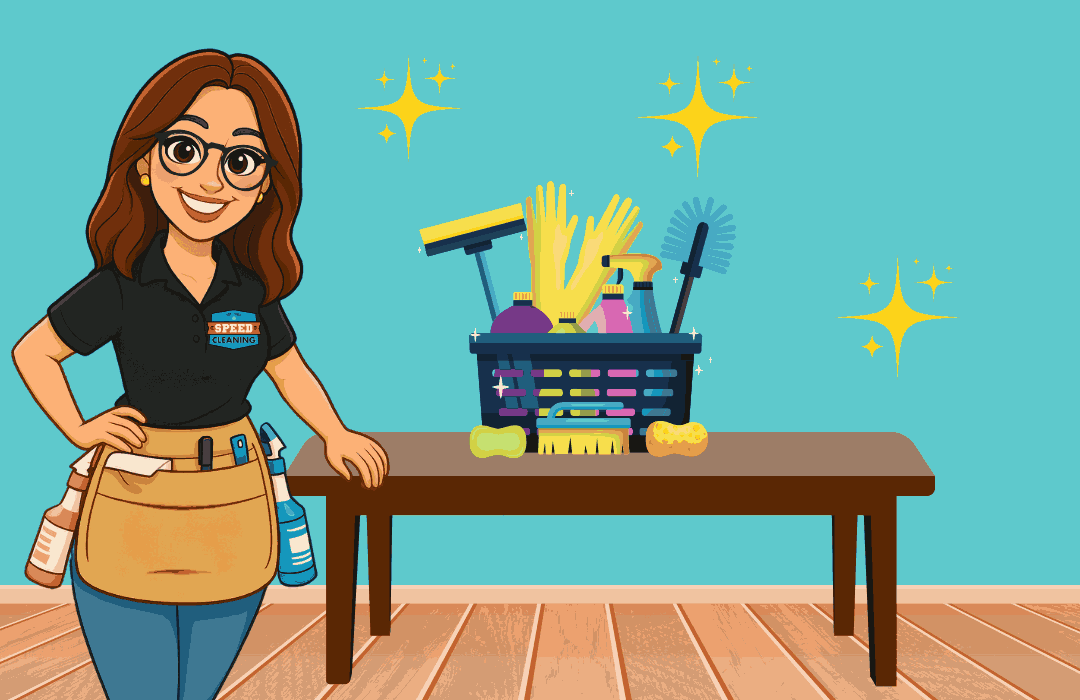
Pro Tips to Keep Your Cleaning Tools in Top Condition
Why Cleaning Tool Maintenance Matters

For any professional cleaner, keeping your tools in excellent condition is essential. Well-maintained equipment boosts job performance, ensures safety, and saves money over time.
Whether you use manual or power tools, taking just a few minutes to inspect and clean them regularly can drastically improve their lifespan and performance.
5 Ways to Keep Your Tools in Tip-Top Shape
Here are five essential steps every cleaning pro should follow to keep their tools functioning at their best:
1. Clean Tools With Every Use
-
Remove dust, grime, and debris from brushes, mop heads, vacuums, and buckets.
-
Rinse and dry microfiber cloths and mop heads thoroughly to avoid odor and bacteria buildup.
2. Check for Damaged Handles
-
Cracks in broom or mop handles can cause injuries and reduce effectiveness.
-
Tighten loose components and replace damaged parts promptly to maintain tool safety and stability.
3. Repair or Replace Power Tools That Don't Turn On Easily
-
If a vacuum or buffer takes effort to start, it’s time for a professional check-up or a replacement.
-
Avoid forcing electrical tools to operate — it can worsen the damage and pose safety hazards.
4. Use Proper Storage
-
Hang brooms, mop heads, and dusters to preserve their shape.
-
Use wall-mounted racks or labeled bins to organize tools by task or area.
5. Store Them in a Dry Place
-
Moisture causes mold, rust, and deterioration of both manual and powered tools.
-
Avoid storing anything in damp closets, garages, or unventilated spaces.

Bonus Tips for Cleaning Pros: Go the Extra Mile
Maintain Vacuums and Electrical Equipment
-
Empty dust containers after every job.
-
Clean filters, hoses, and rotating brushes monthly.
-
Label maintenance dates to stay on schedule.
Sanitize Buckets and Bottles
-
Wash buckets after every use — especially when using harsh or acidic chemicals.
-
Disinfect spray bottles regularly to prevent buildup and clogging.
How to Properly Clean Microfiber Cloths
✅ Step 1: Shake and Rinse After Use
After every use:
-
Shake out loose dust, debris, or hair.
-
Rinse thoroughly under warm water (not hot, not cold).
This helps remove residues before washing and preserves the fibers.
Never do this:
-
❌ Don’t use boiling water — it can damage the fibers.
-
❌ Avoid fabric softeners or dryer sheets — they leave a residue that clogs the microfiber’s pores.
To wash your microfiber cloths:
-
Set the machine to warm water and a gentle cycle.
-
Wash separately from cottons or linty fabrics to avoid fiber contamination.
-
Use a mild, fragrance-free detergent.
About bleach:
-
You can use non-chlorine bleach in small amounts if necessary.
-
For a safer, eco-friendly option, you can add some concentrated Red Juice to your laundry cycle. It helps eliminate bacteria, remove odors, and maintain softness.
After washing:
-
Best option: Hang to air dry.
-
If using a dryer, always select low heat only.
High heat can melt or warp the microfiber.
Final Thoughts: Maintenance Is a Mark of a Pro

Keeping your tools in tip-top shape isn’t just about saving money — it’s about upholding the standard of your service. Clean tools reflect professionalism, help you work more efficiently, and ensure a safer work environment.
💬 Pro Tip: Create a cleaning tool checklist for your team to follow weekly or monthly. Consistency = longevity!
Happy Cleaning,
Amy
Share
